| rss2email.ru |
 | Make Money Online http://www.problogger.net рекомендовать друзьям >> |
- Ditch the Job Mentality and Develop an Entrepreneurial Mindset
This guest post is by Caz Makepeace of y Travel Blog.
Having success in the blogging world is attributed in large part to your own thinking and the mindset that you bring to this new avenue of making money.
Most people arrive here wanting to break free from the rut of a nine-to-five job that they’re no longer passionate about. The hours are long, the work is never-ending, and the pay is poor. Huh! On second thoughts, it sounds very similar to the beginnings of blogging.
What many people don’t realize is that the major hindrance to success in their blogging niche has nothing to do with technique or value, but with the job mentality that they have brought along with them.
Crossing over from a job to blogging is not just a physical move—it also involves a complete change in your mindset. It is a completely different world to what you’re used to in the cubicle farm. I often see arguments break out online which immediately make me wonder whether the people involved have an entrepreneurial mindset or a job mentality.
To cross over to the entrepreneurial world, you need to adopt the following ways of thinking.
Change is evolution
Job people become stuck in the way things are done, and always have been done. They are used to rules, schedules, and procedures. When they cross over into the blogging world, they discover that the rules have changed—and often, they can’t handle it.
Entrepreneurs understand that in the business world, the rules are always changing and if you don’t evolve with them, you’re going to die.
The major arguments that always emerge within the travel blogging community arise between those from the journalistic world and those bloggers whose success has had less to do with their linguistic ability than with their ability to market and network.
Really I just want to shout, “Listen up! The rules have changed. You are not in the journalist world any more. You are in the online world. The place where degrees and awards don’t matter. Anyone can start a website and have massive success with it. Whether you like it or not, doesn’t count. This is the reality of online marketing and building your own business. You either become an entrepreneur and adapt to the new world, or you sink—fast.”
How many highly successful entrepreneurs do you know who were never great at school and didn’t get a college degree? Let’s see. There’s Bill Gates, Andrew Carnegie, Walt Disney, Richard Branson … They have gotten where they are because of their entrepreneurial mindset. Entrepreneurs don’t try to fit the square peg into the round hole—they become a round peg instead.
Think big
Entrepreneurs think big and focus on the ultimate vision of what they are doing. They think outside of the box to look for new and unique ways to be successful and make money. They do not follow the herd. They watch and learn, and then say, “How can I make this better? How can I do this in a different, yet bigger way?” When you think outside the box, you create things that make you move above the crowd.
Job people concentrate only on the tasks at hand, and follow what most other people are doing. They are not used to focusing on the bigger picture as it has never been their vision to worry about. Bringing that limitation over to the entrepreneurial world can stifle your creativity and restrict your ability to handle and solve the many challenges that will arise.
Quitting becomes an easier option. Entrepreneurs know that the road to eventual wealth and success can be long and difficult, and the bigger vision helps move them through that period.
One of my favorite Donald Trump quotes is, “If you are going to be thinking anyway, you might as well be thinking big.” If you think small, you receive small.
We began our travel blogging world with the intention not to make a few ad bucks here and there, but to look towards a bigger picture that can lead us to earning vast amounts of income from many different sources. This bigger picture has an impact our strategy.
We haven’t made much money from our blog yet, and we’e okay with that. We have had success with the bigger picture we have focused on: building our brand and online presence, building a strong community, and networking with the right people. That will become our springboard for future projects that will bring in bigger rewards.
Self-promotion
I know people who are afraid to hand out their business cards, or tell people who they are and what they do. When you are able to do that confidently, you have made a big jump over into the entrepreneurial mindset.
No one is going to promote you for you. No one is going to care about what you have to offer more than you.
If you want to have success in an entrepreneurial world, you have to learn to promote yourself. Think of all the big brand people you know: Richard Branson, Donald Trump, Oprah Winfrey. What are all these people good at? Self-promotion.
Entrepreneurs are willing to do whatever it takes. Hand out those business cards, shake that person’s hand, and speak confidently about what you do and how you can offer value to others. Invite people to check out your website and connect with you via your networks. Share your work and successes.
You are guaranteed to receive criticism for doing this. Concentrate on your bigger picture and understand the criticism comes from those who want to do what you do, but have not yet broken free from the job mentality.
Networking is vital
Job mentality people tend to call this a “You scratch my back, I’ll scratch yours” kind of deal, and in some ways it is. But, in my entrepreneur mind, I never see it as being the case that if I do something for you, you have to do something for me in return.
It has more to do with building relationships and from those, interacting with those you like and trust. A natural extension of a relationship with someone you like and trust is to read their work, use their products, and recommend them to others. People do business with those they like and trust, just as they are friends with those they like and trust. There’s nothing shady about it.
Entrepreneurs immediately start building their networks of professional and business contacts. They understand the power and truth in the saying “It’s not what you know, it’s who you know.”
Networking is not just about what others can do for you, but what you can do for others. Being an entrepreneur means helping out others and providing value when you can. It means creating a mastermind group of people you can share and bounce ideas off of. You don’t hold your cards to your chest for fear of losing out and having others rise to the top over you.
Learn from those you want to be like
In the job world, we are taught that to move up the ladder and get that much-desired promotion, we need to prove we are better than the rest. It becomes a dog-eat-dog world: the knives come out and we are prepared to stomp all over those beside us in order to get to the finish line first.
Entrepreneurs have the intention to be the best at what they do; they are competitive and like to win. But, they know they don’t have to destroy others in the process. They understand that we each have a unique perspective or value that we can offer.
They understand that the best way to get to the top is to learn from those who are where you want to be. They don’t look at the person in the mansion on the hill and feel jealous. Instead, they find out that person’s name, they give them a call, and they say, “Hey. I really like what you have achieved. I want to be like you. How can I learn what you know?”
And usually that successful entrepreneur replies, “Well, how about we meet up for coffee and I can go over a few things with you?”
Entrepreneurs understand the concept of abundance. They understand what it takes to get to the top and they are more than happy to take the time to help someone do the same. As with everything in life, there will always be anomalies, but I have never met an entrepreneur yet who I have not had an interaction with that’s similar to what I have just described.
Making money is a good thing
“I think it’s scammy … dirty. I don’t want to ask for it. I feel funny asking for freebies.” These are just some of the comments I hear thrown around in the blogging world when it comes to making money.
I recently stayed in a hostel in Sydney free. It wasn’t really free, because in return for that I tweeted about the hostel the whole time I was there. I wrote a really great review of the place. I also wrote a couple of other spin-off articles on my site that linked to that piece. I promoted it through my social sites.
I had at least six people say to me that they would definitely stay in this hostel when they come to Sydney. That was on the day it was published, and from those who spoke. But let’s keep it at six and say that for one night’s stay in the dorm room where it costs $40, the hostel would earn $240. It cost them $140 to give us a private room for the night. We made them money.
Entrepreneurs think like this. They believe they can offer value and know they deserve to be rewarded for it. Because of this, they are not afraid to ask for the money and they don’t believe it’s dirty when they get it. They approach all transactions from a win-win perspective and there’s nothing bad about this.
On a similar level, I hear many bloggers say they feel they are selling out on their readers by selling advertising. Really? If your readers expect you to spend countless hours every day writing valuable content that informs and entertains, without receiving any compensation for it, then you need to get new readers.
Do you think they feel the same way when they pick up a magazine, a newspaper, or turn on the TV? Why do people think that when you enter the blogging world, suddenly you should start writing and work for nothing? If you have a job mentality then you may not get past these uncomfortable feelings of “selling out.”
You are doing this for the passion—yes! But you are also doing this for the income you originally craved so you could start living your life by your desires.
Think like an entrepreneur: “There is nothing wrong with making money. Making money enables me to move forward and grow, so I can in turn provide more value.”
If this article has struck a raw nerve with you, then ask yourself, “Could this perhaps be a sign that I have not yet crossed over?” Well … have you crossed over?
Caz Makepeace has been travelling and living around the world since 1997. Along with her husband Craig they are the founders of y Travel Blog. You can visit her Facebook Fan Page or sign up for herRSS Feed.
Post from: ProBlogger Blog Tips

Ditch the Job Mentality and Develop an Entrepreneurial Mindset

Переслать - Third Tribe is Closing to New Members — Join Us Before Friday, April 1
No, it’s not an April Fool’s joke — we’re closing our flagship community, the Third Tribe, to new members on April 1, 2011 at 5:00 PM Eastern Time (U.S.).
If you’re not familiar with Third Tribe, it’s a community that I co-founded in 2010 with Brian Clark (Copyblogger), Sonia Simone (Remarkable Communication), and Chris Brogan (ChrisBrogan.com). We built it to provide a learning and networking opportunity for internet marketers who wanted cutting-edge information about how to grow their sites — without the high-pressure hype or “black hat” techniques you see on some other sites.
We took the most effective techniques from Internet Marketing and blended them with the content-rich, community-building style of the social media crowd.
What can you get from Third Tribe?
- Each month, you get at least one audio seminar on an essential marketing or business technique. We talk about SEO, social media marketing, blog monetization, affiliate marketing, and heaps more. Implement what you learn in the seminars and you’ll start to see real growth in your business. Full transcripts are provided, as well as “Next Action” worksheets that will give you the next steps to take.
- Each month you also get two Q&A sessions with Tribe founders. These are fantastic “mini consulting” sessions where you can get specific advice that relates to your own business. Imagine stopping any of the four founders in a conference hallway and getting five or ten minutes of our undivided attention to address your business question. That’s what the Q&A sessions do for our Tribers … twice every month.
- 24/7 access to a thriving community of online marketers. Ask questions, get feedback, form JV partnerships, or just ask your pals for a “Like” on that Facebook page. When things get tough, it’s great to know you have peers and friends who have your back.
If you’d like a taste of some of our seminar content, we’ve prepared a “free sample” for you. This case study was a bonus seminar for this month, with Sonia Simone grilling Third Triber Shane Ketterman on how he grew his niche site from zero to 10,000 unique visitors a day … in 7 months.
Even if you don’t join the Tribe, do yourself a favor and download the case study. It’s filled with lessons you can apply right away to your own sites. (For example, he has a nice technique for using Adsense to quickly find the most profitable corner of your blog.)
So why is the Tribe closing down?
It’s not really closing — it’s being transformed into something bigger and better. And … yes … more expensive.
That’s why this is great opportunity to come into the Tribe. Join today and you’ll get in at the best possible price, plus you get instant access to more than 24 hours of archived seminar content.
No, the Tribe isn’t the cheapest resource you’ll find. But if you’re serious about treating your blog as a business, it’s an investment that can repay you many times over.
I hope you’ll come join us in the Third Tribe today. Remember, the site will close to new members on April 1, 2011, at 5:00 PM Eastern (U.S.) Time. Don’t get locked out — you’ll never be able to join at this price again.
Post from: ProBlogger Blog Tips

Third Tribe is Closing to New Members — Join Us Before Friday, April 1

Переслать - 8 Strategic Blog Home Pages that Draw Readers Deeper
This guest post is by The Blog Tyrant.
One of the hardest tasks a blogger can face is getting readers to stick around. In actual fact, its one of the most important things you’ll ever learn to do. Why? Because unless those visitors delve deeper into your site you are essentially wasting your time with all that amazing content, social media effort, and SEO work.
Bloggers often forget that we need to use things like design, layout, colors, format, and so on to help visitors delve further in to our sites.
In this post I’m going to show you eight blog home pages that make readers click deeper. Hopefully it will give you some ideas for your own.
8 Home pages that draw readers deeper
I wanted to start off by letting you know that each of these pages was chosen for a different reason. Now, I’m not saying that these are the best blog home pages in the world. What I am saying is that each one does something extremely well that encourages new visitors to become more loyal readers.
1. Mashable
Mashable is one of the world’s biggest blogs and has a massively high page views. The main reason they are able to do this is through social proofed elements of their layout. Let me explain.
Social proof is where you provide some kind of assurance that other people have used your service. Testimonials, for example, are a common form of social proof. These things reduce anxiety in the reader but also serve to encourage a group mentality whereby people want to be involved in what other people are doing. It’s just human nature.
Mashable is all about social media and you see items like the “most shared this week” and the number of Facebook “likes” featuring prominently. The “buzz” this creates gets people to go deeper in to the site—people want to read articles that hundreds of others found interesting.
2. Digital Photography School
Digital Photography School is Old Man Rowse’s biggest blog. It has hundreds of thousands of subscribers and is one of the most heavily community-based blogs you’ll ever read. The activity in the comments and the forums is really quite wonderful.
I remember when Darren first released the new DPS design; I was blown away by how efficient and enticing it was. The old site was a straight up one column blog but this is a multi-level blog that divides the areas up by different sections of interest. Want to read about photography? Just go to that section. Want to read about equipment? Go over there.
This is a fantastic way to ensure photographers find areas of interest at the home page. It gives very little room for people to get bored and move on.
3. Huffington Post
Huffington Post. The blog turned worldwide news source. Sigh. Whatever you might say about the quality of the news that comes out of the site, the layout is extremely captivating. And it’s not because it’s pretty. Here is an example of a site on which the visuals aren’t necessarily pleasing, but they are very effective.
The area of the home page above the fold is dedicated to the most shocking current story as well as a pop up bar that asks you to get involved. It also uses a series of highly placed headers to show you what news is trending at the moment. Again, this is done to capitalize on people’s need to know what other people are interested in.
Scroll further down the home page and you see more engaging items like author profile photos to build loyalty, huge comment counts on featured articles and a mix of featured articles from different topics.
4. Zen Habits
Leo from Zen Habits is one of the nicest guys in the world. A few years ago he gave me some free advertising space and helped me launch a new blog. His new design is totally minimal and fits in extremely well with the branding of the site. Lots of space.
This type of strategy works extremely well for a blog with amazing content. Why? Because it is entirely focused on that content. You read that first amazing article and you feel compelled to delve deeper.
This is a brave design that takes a lot of courage because if each and every post that appears on the homepage is not amazing, you will see a lot of people drop off.
5. Smart Passive Income
Speaking of nice guys, Pat from Smart Passive Income is one of the nicest. Recently when I was setting up my podcasts he gave me a lot of time-saving tips. And that is a big theme in Pat’s design: help.
See the top level of menu items? Each one has a sub heading that gives you more information about what to expect inside. I remember the first time I visited Pat’s site, I spent ages clicking through each menu item to browse the contents. That is something I don’t normally do. The navigation is extremely “sticky”.
Similarly, there is a little space below the menu where Pat gives little random messages or tips. This takes the “tutorial” vibe of his site even further and definitely makes the experience feel more personal and intimate.
6. Tumblr
The guys at Tumblr are extremely good at design. In my article on the 12 Best About Us Pages I confessed that I thought theirs was the best one of the lot. And while the blog homepage isn’t right up to that standard, it is still worth a look.
The reason I included Tumblr in this list is because they use simple graphical elements to draw the eye down. Each post is very simple and usually only includes a picture or a bit of text. And each alternating post has a different background. Mixed with the fact that the emphasis is on showing which staff member wrote each post and you have an extremely addictive blog home page.
7. Fail Blog
Fail Blog, in case you have been living under a rock, is part of the LOL Cat empire. These guys build sites with funny pictures of cats and dogs and people getting hurt and make a small (read: large) fortune out of it.
Again, the homepage design is not beautiful, but it is extremely addictive. You can navigate through all their sites from the top as well as getting in on the action by voting for the best fails. They also have a little “random fail” generator, which is the kind of gimmick people on this site love to use to waste more of their day.
One of the cleverest ideas here is the fact that every can have a go at re-captioning the fails. This builds on the community in a massive way by getting everyone interacting with each fail multiple times. People write new captions and then come back to see what other people are saying about it.
8. The Onion
The Onion is quite literally one of the funniest websites on the Internet. And aside from hilarious content, great titles, and a home page that lets you see a plethora of content all at once, one thing they do really well is have an interactive and changing header that gives you access to new information.
Normally blogs just have a static header but this one moves and changes based on what’s going on at the blog. Sure, they still have the same logo and colors to keep the branding recognizable but they also use the variation to get people involved in new areas. Very clever.
Lessons to apply to your own blog
So what are the take-aways from these eight blogs home pages? What are some concrete things you can apply to your own blog today to increase the amount of pages people view?
- Focus on social proof.
Make sure your homepage always has elements that relate to social proof. Use testimonials, popular articles, high comment counts, and social media followers to show that your blog is busy. This is something that you should never underestimate. - Know your audience.
It is really important to know who is coming to your home page and why. Are they coming for this topic or that topic? Do they want to read articles or listen to podcasts? Make sure your navigation allows them to find what they want instantly. - Let your story show.
Make sure you use photos or text to tell your story. Let people become loyal to you and your message. Tumblr does this with staff profiles, Pat does this by showing himself with his baby, etc. You want to make sure people feel like you are different from everyone else they’ve seen today.
As I mentioned in the post about the best about us pages, it is a really good idea to occasionally take a look at what the big guys in the industry are doing. Quite often they are doing it for a reason. The most important thing, however, is to make sure you don’t leave it as an idea but apply it to your own blog right away.
What draws you in?
I’d like to open up the floor now and find out what parts of a website’s home page draw you in deeper? Is it something to do with the layout, the content, the colors—or something totally different? Please leave a comment and let me know.
The Blog Tyrant hasn’t revealed his name yet but we know that he is a 25-year-old guy from Australia who works from home and has sold several blogs for around the $20,000 mark. Now he’s teaching you how to dominate your blog. Subscribe by email to get his free eBook on capturing 120% more email subscribers overnight or follow him on Facebook.
Post from: ProBlogger Blog Tips

8 Strategic Blog Home Pages that Draw Readers Deeper

Переслать - Focus on social proof.
- The Unsexy Truth about Finding Traffic for Your Blog
Last week I tweeted that I’d not checked my Google Reader account in a month. Well, it turns out that I’m not the only one.
Within minutes, I started getting tweets back from others saying that they rarely check their RSS feeds any more. Instead, people were finding content from other sources including:
- Paper.li
- email subscriptions
- apps (some drew in RSS feeds, but others were recommendation engines)
The decline of RSS?
It struck me just how much things have changed over the last two or three years.
It wasn’t long ago that bloggers were promoting their RSS feeds above all other methods of subscribing to their blogs. Email was dead and RSS was going to be the number one way that people would connect with you.
RSS does continue to drive traffic (at least, my Feedburner stats seem to indicate that) but as I look at my own statistics to see where people are arriving on my sites from, the percentage of those coming from RSS/Feedburner seems to be on the decline. The decline is only slight, but in comparison to the steady increases I saw a few years back, it’s been declining (as a percentage of overall traffic) for me, at least.
Fluctuations in social media traffic
What I do notice is that some sources of traffic fluctuate quite a bit from year to year.
For example, different social media sites have been rather inconsistent. Some months, Twitter can be good, but other months it can be down. Facebook, StumbleUpon, Digg, and other social media sites have provided great influxes of traffic at times; other months, they’re very low.
Some of the traffic levels will depend on the types of content we’re writing, but in other cases, it’s more to do with the rise or decline of the sites themselves (for example, Digg seems to have suffered a lot lately).
Overall, I’ve seen traffic levels from Twitter and Facebook rise, but this has varied from month to month, and despite quite a bit of effort in building my network, the percentage of my overall traffic coming from social media has been relatively small (less than 10%).
Steady growth in…
So RSS seems to be in decline (for me) and social media traffic has been fluctuating … but overall traffic has been continuing to grow.
So what is performing? Is there some new, sexy form of traffic that I’ve been focusing on?
I’m afraid not. If anything, the traffic sources that I’m seeing steadily grow have been a little, well, retro. There are two of them:
- Email. I keep seeing people talk about how they’re giving up on email, and that it’s a technology that’s dying, but I’m just not seeing that. Perhaps those at the cutting edge are giving it up, but “normal” people certainly aren’t. It’s increasing the traffic to my sites through newsletters, and continues to bring conversions when it comes to sales.
- Search Engines. Also regularly reported is that search engines are under threat from social media as more and more people use social media sites to search and find content to read. I’ve no doubt that there’s some truth to that, but search engines are by no means dead. Again, “normal” people still head to Google to find content. I’ve not put a lot of time into SEO or particularly targeted search traffic, but one of the side-effects of adding daily content to a blog is that you naturally build up the pages being indexed by search engines, so search traffic will naturally grow.
Conclusions
By no means am I suggesting that social media isn’t worth your time and effort, or that you should kill your RSS feeds and solely focus your attention on email or SEO. These observations are my own, from my four blogs, and they may not be typical.
I think the key take-aways for me are these:
- Do some analysis of your own traffic and where it’s coming from. Doing this analysis myself today has challenged me to think about how much time and energy I do put into social media, and whether it’s really paying off as much as if I’d made other choices for my focus!
- Don’t throw all your efforts into just the new, “sexy” forms of marketing (like social media). They have incredible potential, but don’t throw the baby out with the bath water.
- Keep in mind that the average internet user doesn’t always know and use new technology like the social-media savvy bloggers that you and I are. It’ll vary from niche to niche, but good old email and search engines might be good places to focus your efforts!
I’d love to hear some analysis of your own sites’ traffic sources. Have you seen any shifts in the sources of your traffic? Do they correlate with where you put your time and energy when it comes to marketing?
Post from: ProBlogger Blog Tips

The Unsexy Truth about Finding Traffic for Your Blog

Переслать
 | Блог о жизни и браке в Европе Все о русских женщинах и европейских мужчинах. Россия и Европа. Мужчина и женщина. Он и она. Психология отношений. Записки владелицы Брачного Агентства . Присоединиться → |
| Кредиты от BSGV. Ставки снижены. Ипотека от 11% годовых. | Реклама |
| rss2email.ru | отписаться: http://www.rss2email.ru/unsubscribe.asp?c=12354&u=1052515&r=672244627 управление подпиской: http://www.rss2email.ru/manage.asp партнерская программа: http://partner.rss2email.ru/?pid=1 |
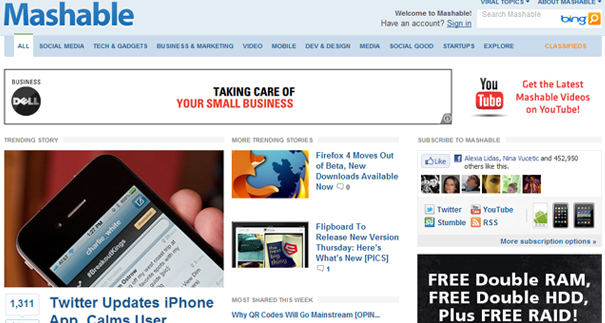


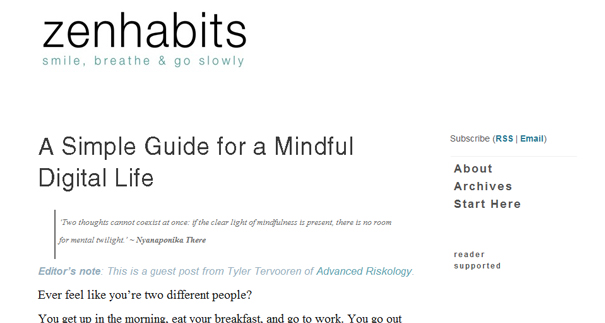
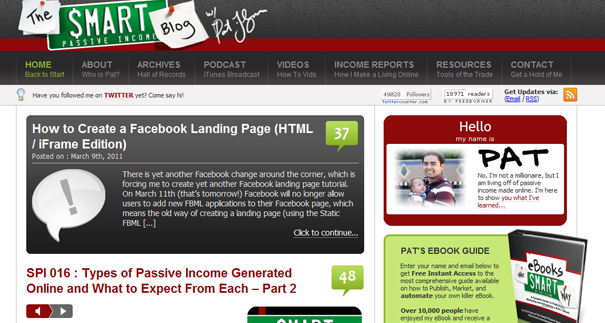
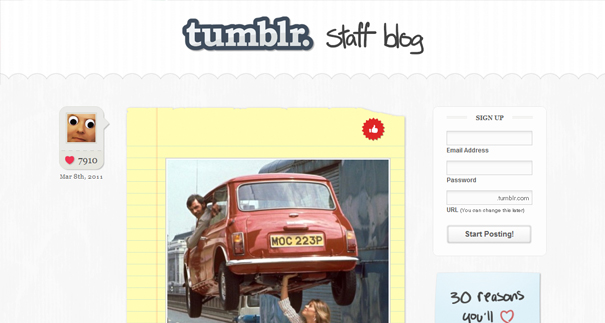
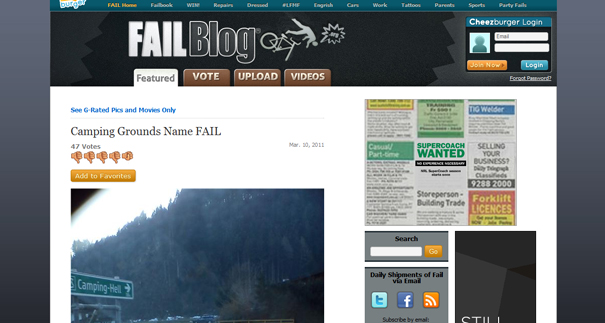

Комментариев нет:
Отправить комментарий